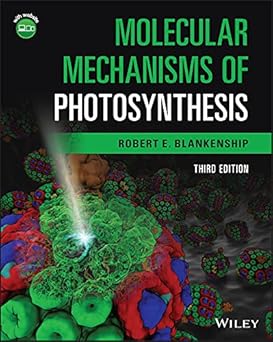(PDF)Molecular Mechanisms of Photosynthesis 3rd Edition
by Robert E. Blankenship
Key Highlights
- •📘 Comprehensive coverage of molecular mechanisms in photosynthesis.
- •☀️ Features the latest research and findings in its 3rd Edition.
- •🔬 Authored by a leading expert in the field of photosynthesis research.
Description
Ready to truly understnad how life harnesses the power of the sun? Dive deep into the fascinating world of Molecular Mechanisms of Photosynthesis, 3rd Edition by Robert E. Blankenship. This comprehensive photosynthesis book is your ultimate guide to one of nature's most vital processes.
Who is this book for? It's perfect for undergraduate and graduate students in biology, biochemistry, and plant science. Researchers needing an up-to-date reference on photosynthetic mechanisims and bioenergetics will also find it invaluable. Even if you're just deeply curious about how plants make food, this book breaks down complex ideas.
What problem does this book solve? Are you struggling to grasp the intricate steps of light harvesting, electron transfer, and carbon fixation? Feeling lost in outdated information? This book provide a clear, detailed, and current explanation of the entire photosynthetic process at the molecular level. It cuts through the complexity, offering a structured journey from fundamental principles to the latest research findings.
What will you gain from reading it? You'll get a solid foundation and advanced knowledge of photosynthesis. Understand the structures of photosynthetic complexes, the pathways of energy and electron flow, and how different organisms have adapted their photosynthetic machinery. This book help you connect molecular details to broader biological and ecological contexts.
Why is it worth reading? As the updated 3rd Edition, this book incorporates recent advances and discoveries in the field, ensuring you're learning the most current science. Professor Blankenship is a leading authority, and his explanations are known for their clarity and precision. It's a definitive resource, widely reccomended for courses and research worldwide. Stop searching fragmented info online; get the complete picture here!
Don't wait to unlock the secrets of photosynthesis! Download the PDF copy of Molecular Mechanisms of Photosynthesis 3rd Edition today and illuminate your understanding.
FAQ
Is this book suitable for someone with only basic biology knowledge?
While it delves into molecular details, the book is structured to build understanding from fundamentals. An introductory biology and chemistry background is helpful, but dedicated students should be able to follow along.
What's new in the 3rd Edition compared to previous ones?
The 3rd Edition includes updated information reflecting recent research progress, potentially new diagrams or revised explanations based on the latest discoveries in photosynthetic complexes and regulatory mechanisms.
Does this book focus only on plant photosynthesis?
No, it covers photosynthesis broadly, including mechanisms found in bacteria and algae, providing a comparative perspective on how different organisms perform photosynthesis.
Are there diagrams and illustrations to help understanding?
Yes, textbooks like this typically rely heavily on clear diagrams and illustrations to explain the complex molecular structures and processes involved in photosynthesis. This book is expected to be well-illustrated.
Can I use this book for my university course on photosynthesis?
Absolutely! It's designed as a comprehensive textbook and reference, making it highly suitable for university-level courses in biology, biochemistry, plant science, and biophysics focusing on photosynthesis.
How quickly will I receive the PDF after purchase?
Typically, PDF access is granted very quickly after purchase confirmation, often within minutes, though processing can sometimes take a little longer.
Reader Reviews
About the Author
Robert E. Blankenship is a renowned biochemist and a leading international authority on photosynthesis. He is a Professor Emeritus at Washington University in St. Louis. His extensive research focuses on the primary processes of photosynthetic energy conversion, particularly in photosynthetic bacteria and algae. His work has significantly advanced our understanding of light harvesting and electron transfer mechanisms.
